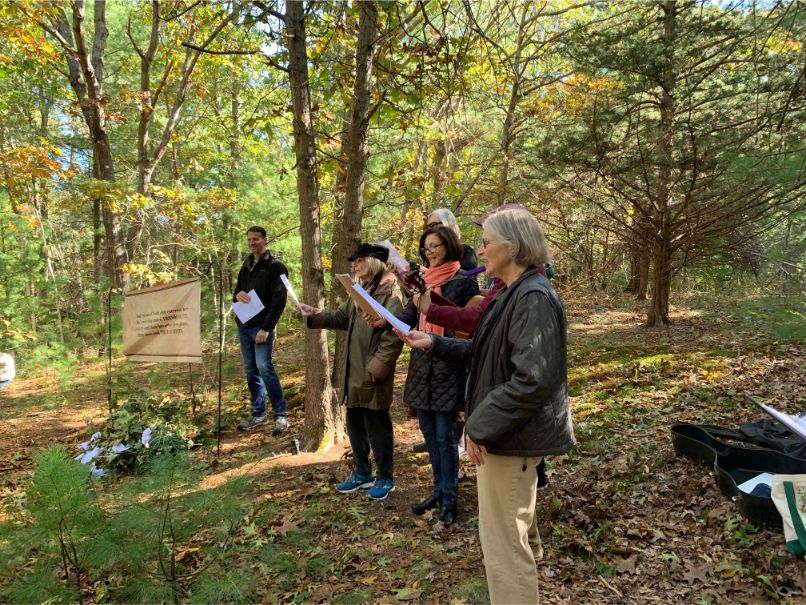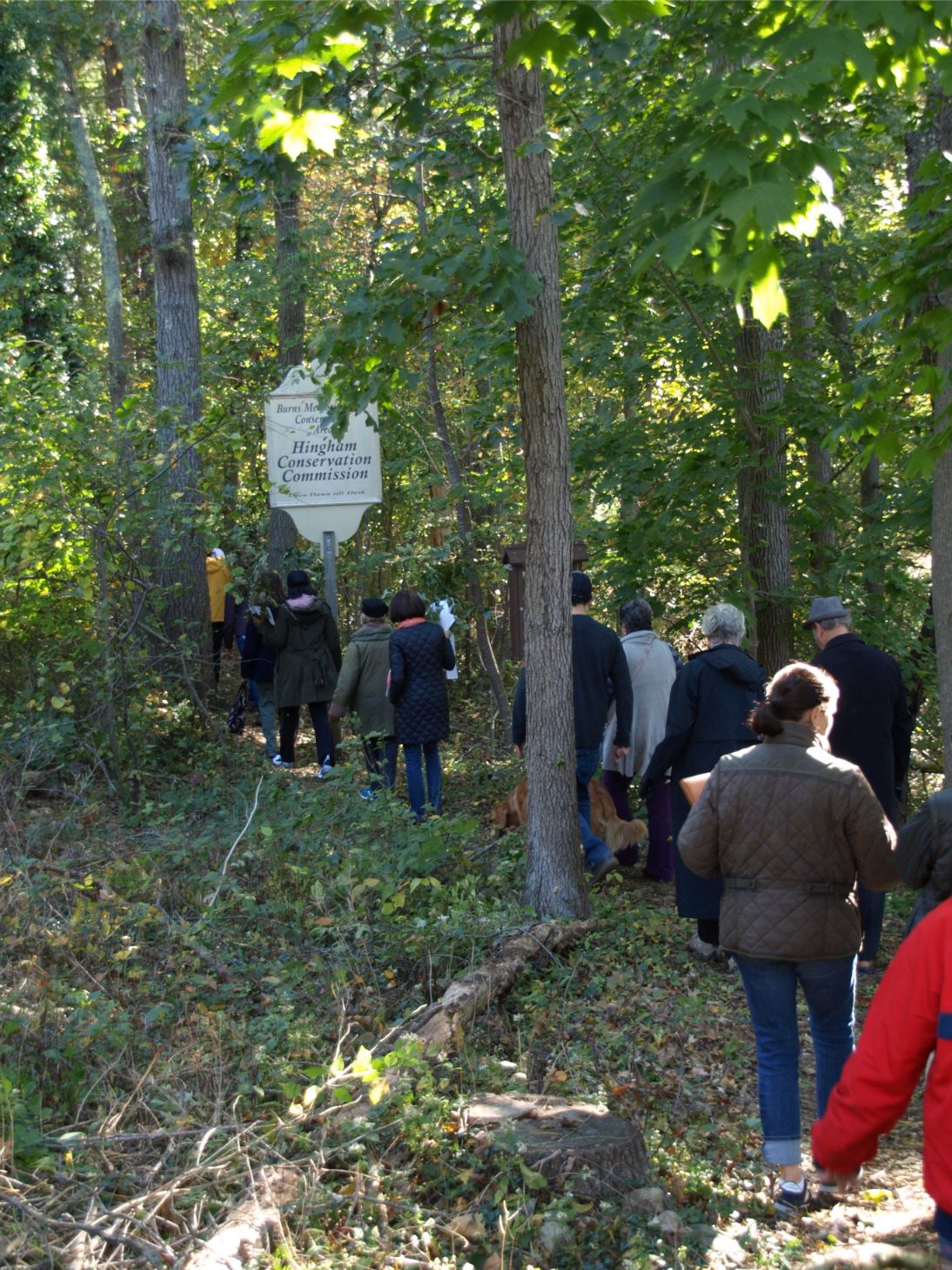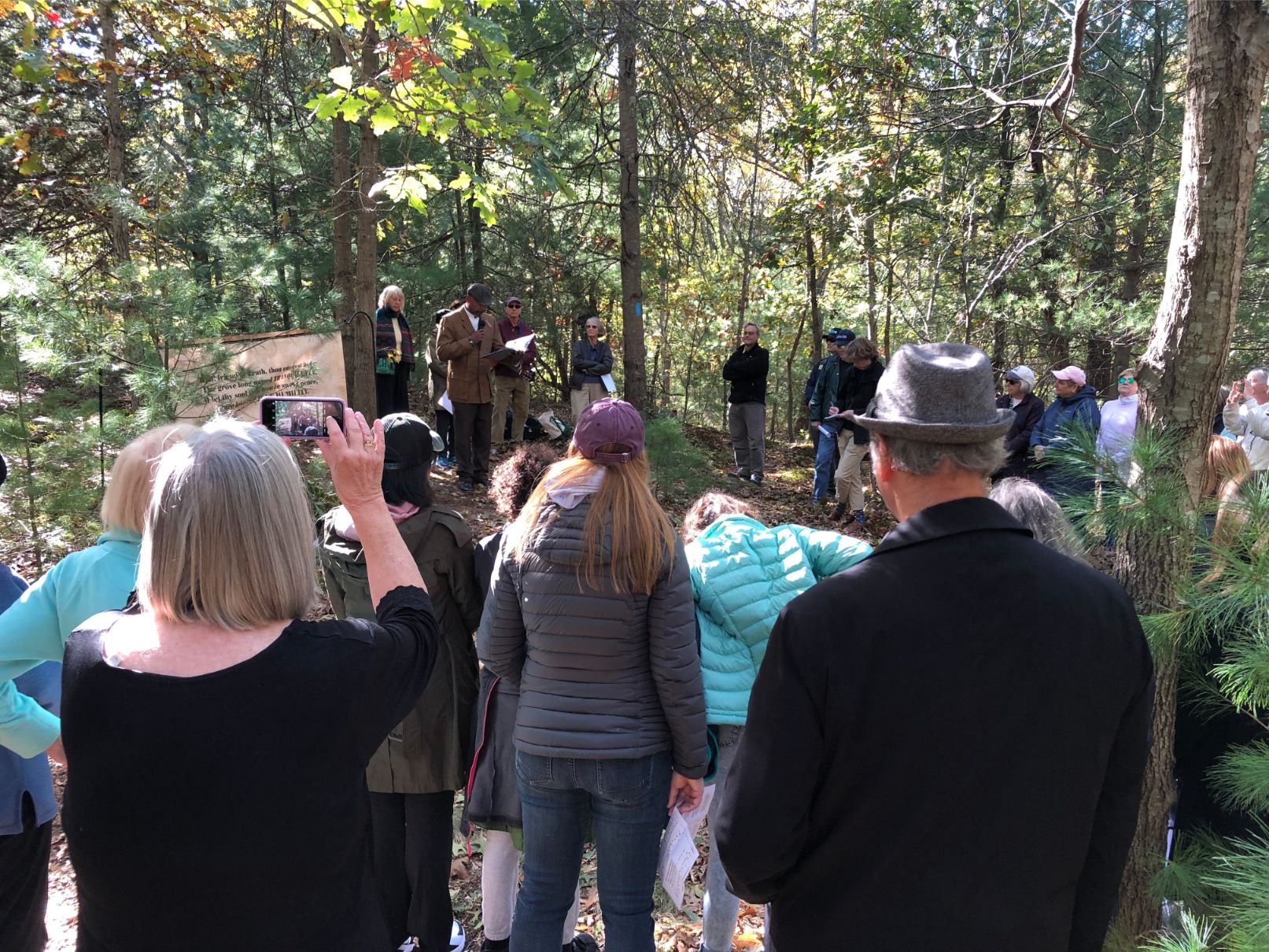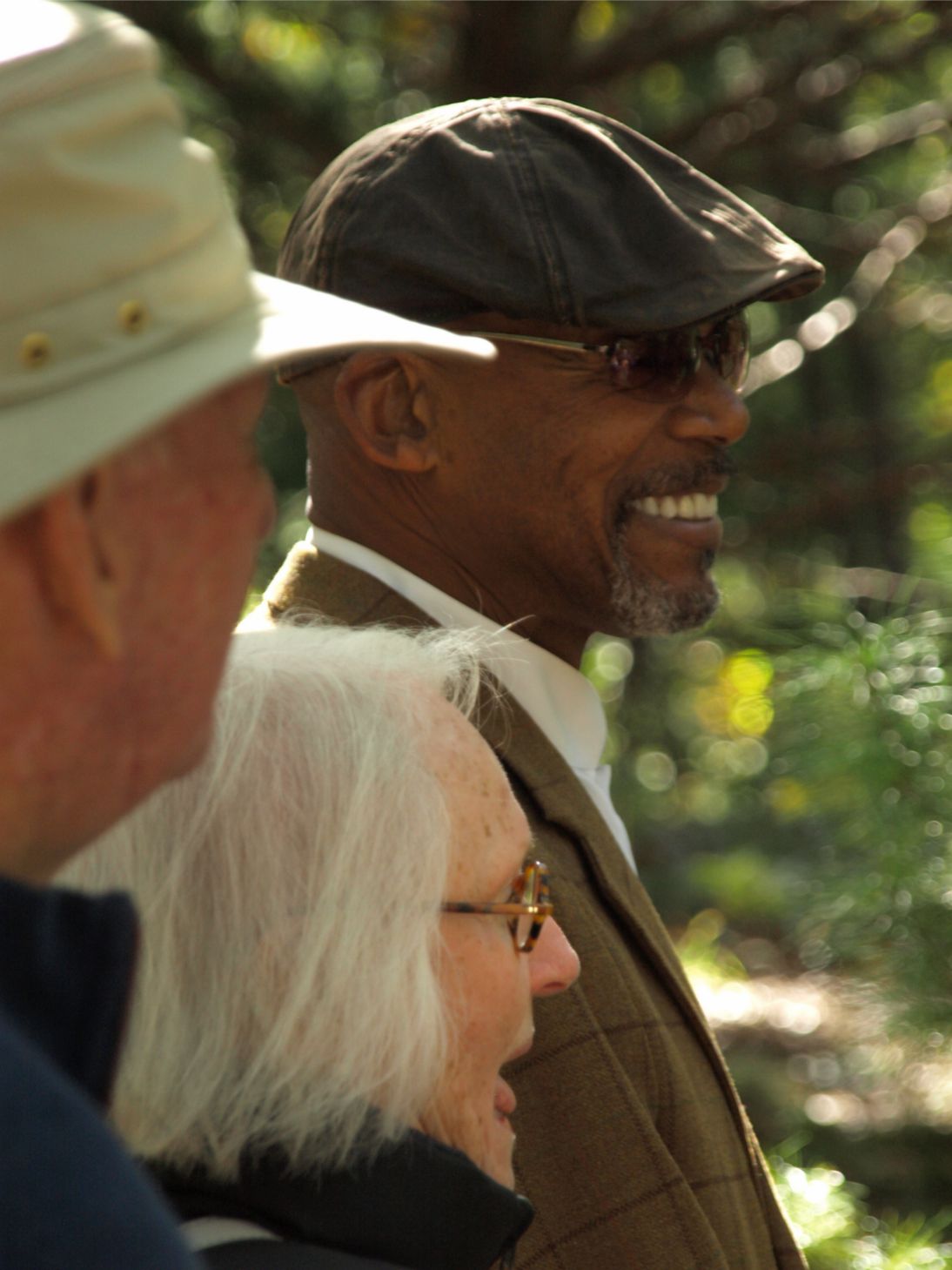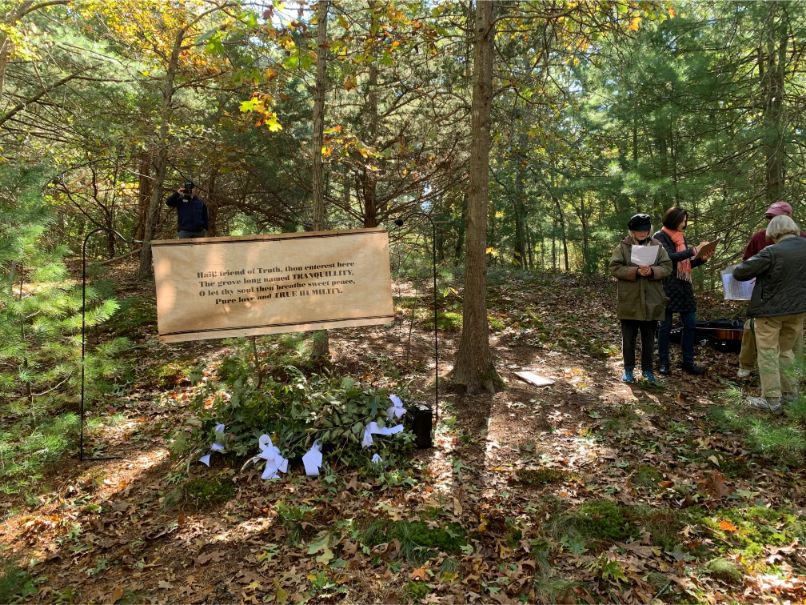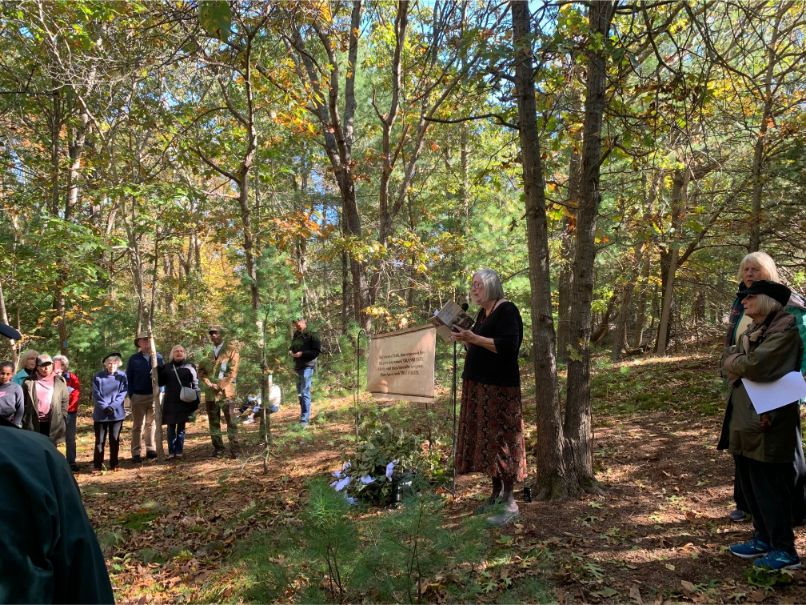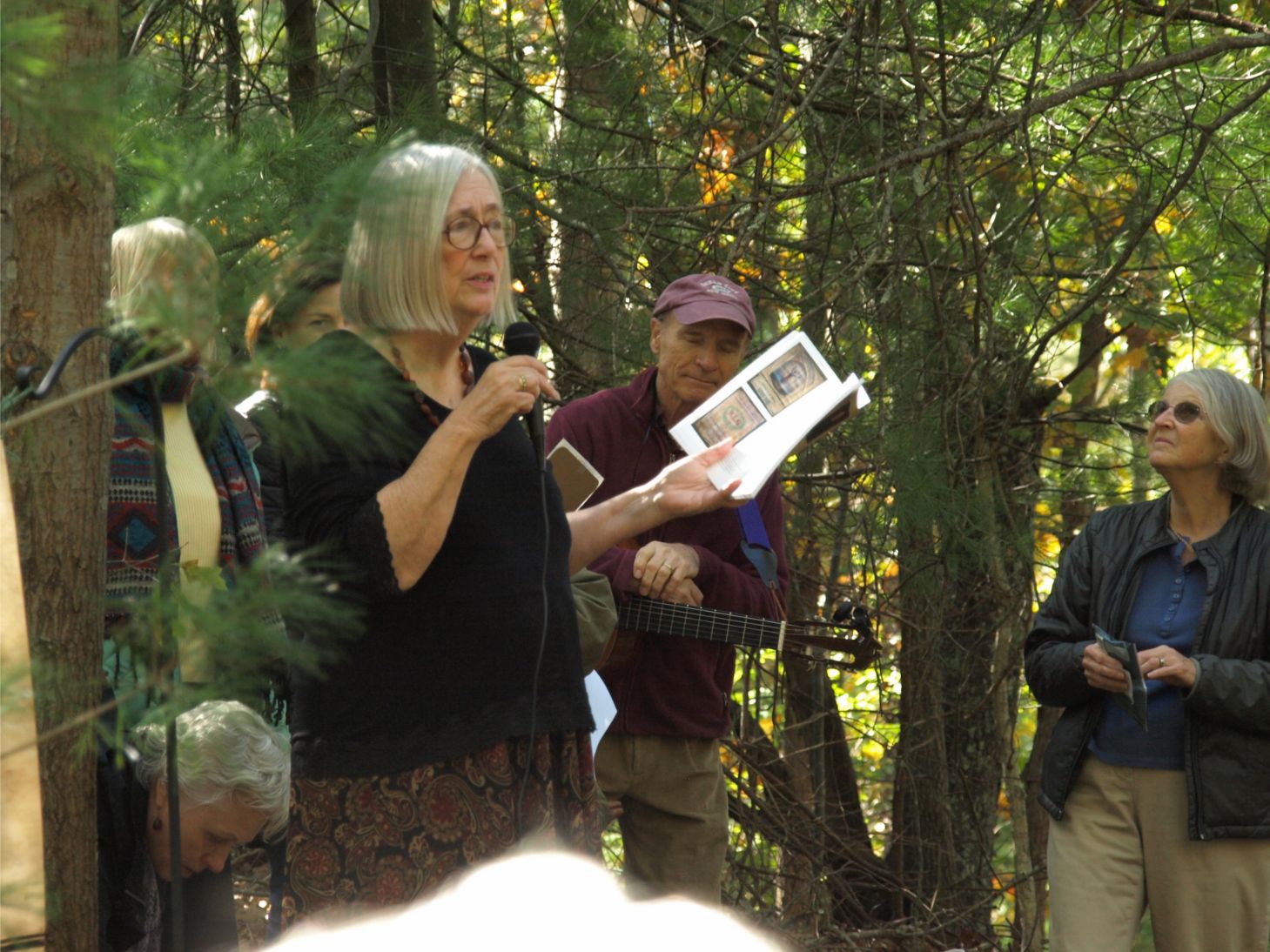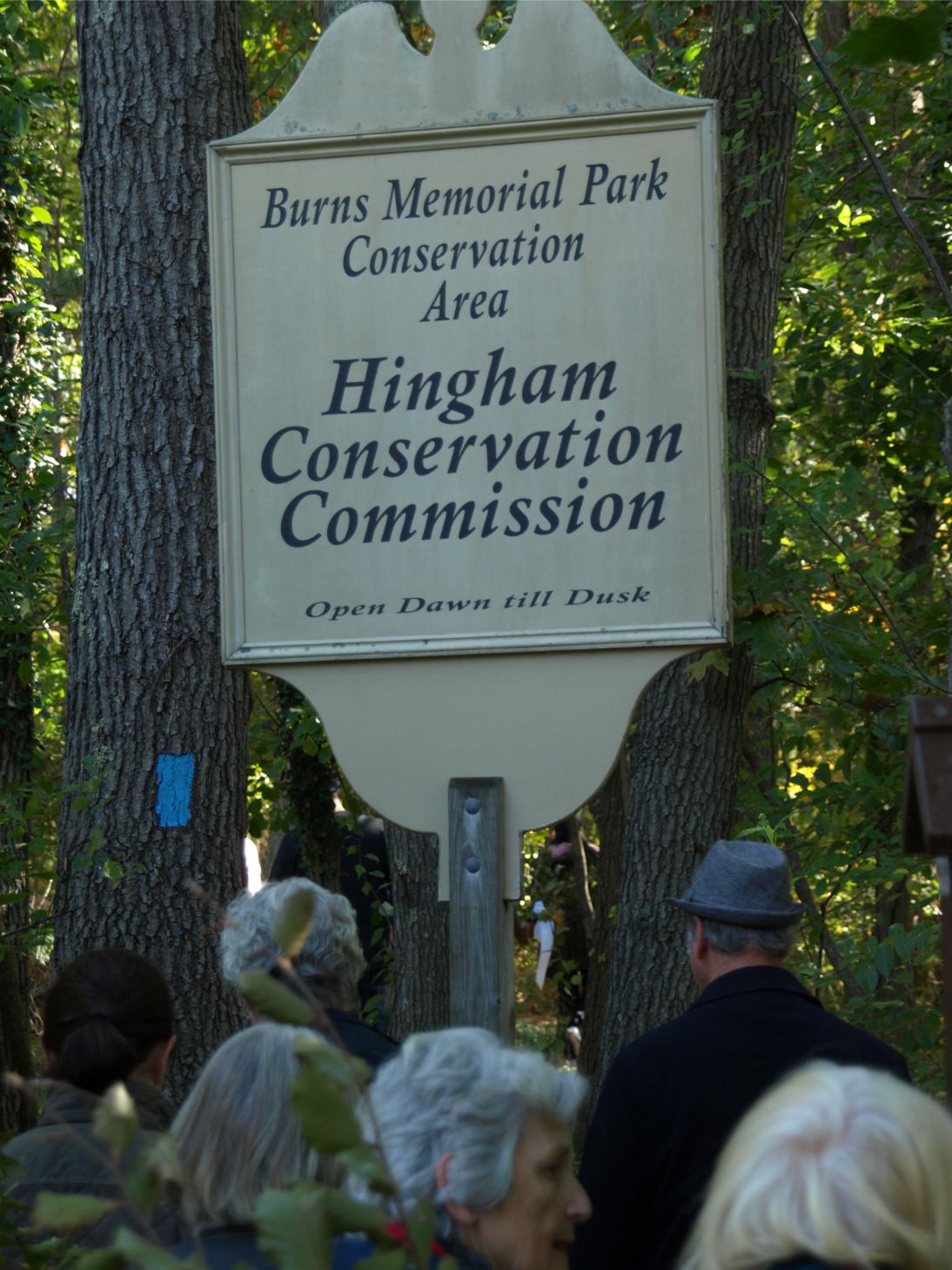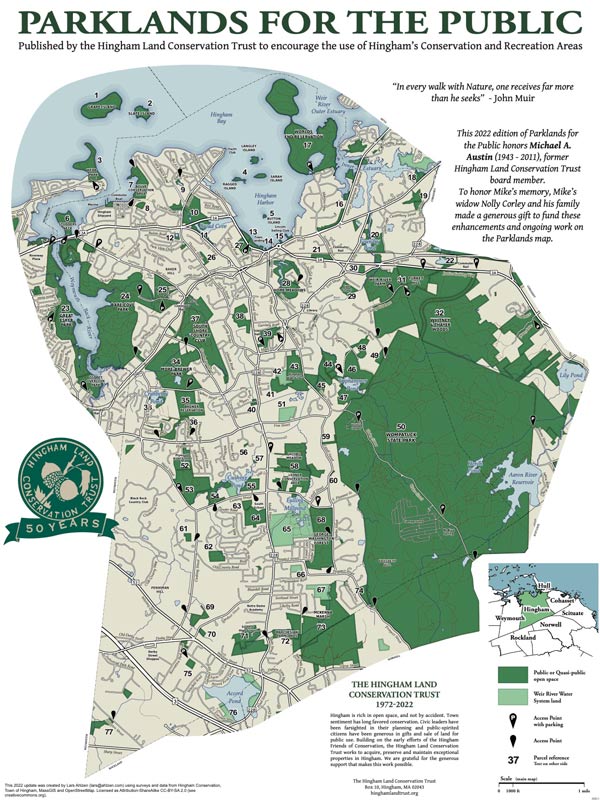Burns Memorial Park is in an area known as Tranquility Grove. Historically Tranquillity Grove was an area of large outdoor gatherings including an 1844 abolition rally. Burns Memorial Park is the portion of Tranquility Grove that is still open to the public as a conservation area. The following background of a historic 1844 Tranquility Grove abolitionist event is drawn from a Hingham Lincoln Day presentation prepared and delivered by Martha Reardon Bewick in 2017.
Tranquility Grove was a popular park/ meeting area in the 19th century. The Grove was owned by the Thaxter brothers, Henry and Edward, who lived at 135 and 137 Main Street. It had been a favorite retreat for townspeople, for Sunday school picnics, lectures, and retreats, even for moonlight walks. Abigail May, courting Bronson Alcott in 1828, wrote even then of dreamy evenings in Tranquility Grove when she visited Hingham friends.
Hingham was home to an active group of mid 19th century abolitionists. Led in large part by local women who were considered extremists by many. Hingham’s abolitionists worked for freedom through petitions, speeches, meetings, and protests. High-profile abolitionists visited Hingham regularly during this period, including Frederick Douglass (who came more than once), William Lloyd Garrison, an aging John Quincy Adams, and the Grimke sisters.
In 1843 abolitionists in Hingham began to plan a large 10th anniversary celebration of the Emancipation of Slavery in the British West Indies, to take place on the 1st of August 1844. One reason this event was scheduled to take place in Hingham was due to Sydney Howard Gay. A Hingham son who had joined Garrison and the abolitionists after law school, he had been recently appointed editor of the National Anti-Slavery Standard in New York. He knew Tranquility Grove, and its beauty, and suggested it would be an excellent location for the event.
(A note about Sydney Howard Gay — His meticulous records of fugitive slaves whom he assisted in New York were discovered just 10 years ago in the Columbia University archives. The Gay records are key to books recently written about the underground railroad, and a new understanding of how slaves were able to escape, their experiences, and how they reached their eventual destinations.)
Tranquility Grove was chosen to be the site of the great Pic Nic The town’s 1844 anti-slavery event at Tranquility Grove marked the tenth anniversary of the abolition of slavery in the British holdings of the West Indies. Many anti-slavery advocates held annual celebrations throughout the region. Jarius Lincoln held the position of chief marshal of the “grand procession” that capped off the celebration in Hingham. The festivities included a speech written by Fredrick Douglass and the singing of many abolitionist songs as participants marched from the Old Ship Church (the oldest continuously run house of worship in the United States) to Tranquility Grove. Believed to be the largest such abolitionist event it attracted between 6,000 and 10,000 people.
In 1972 the Burns family, which came to own a portion of Tranquility Grove, sold the Burns Memorial Park to Hingham for conservation.
The park can be accessed by foot, from dawn to dusk, via a path between #92 and #96 Hersey Street. Burns Memorial is located along Hersey Street with access via path between #92 and #96 Hersey Street. The steps leading to the entrance were replaced in 2019 By Troop 1 Eagle Scout Jared Mayo. Parking for visitors is available at the Hersey Street DPW facility across Hersey Street from the park entrance.

Recommended Trail Activities: Walking, Hiking, Trail Biking Length: .5 Route Type: Trail (Narrow) Difficulty (Grade/Surface): Easy, Moderate Parking: Limited Dog Restrictions: Allowed Ancillary Activities: Cross-country skiing, Snowshoeing, Horses, Birding, Hunting (permission may be required), Camping (permission may be required), Picnic, Natural Features, Historic Sites, Scenery


